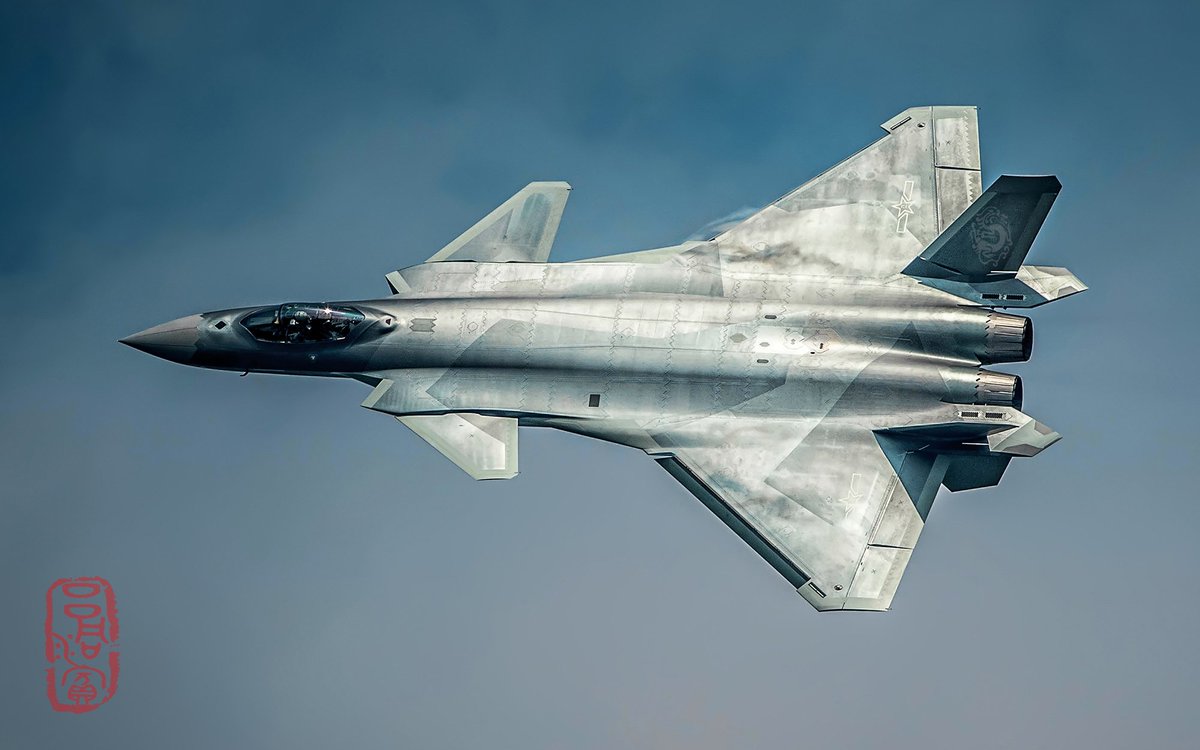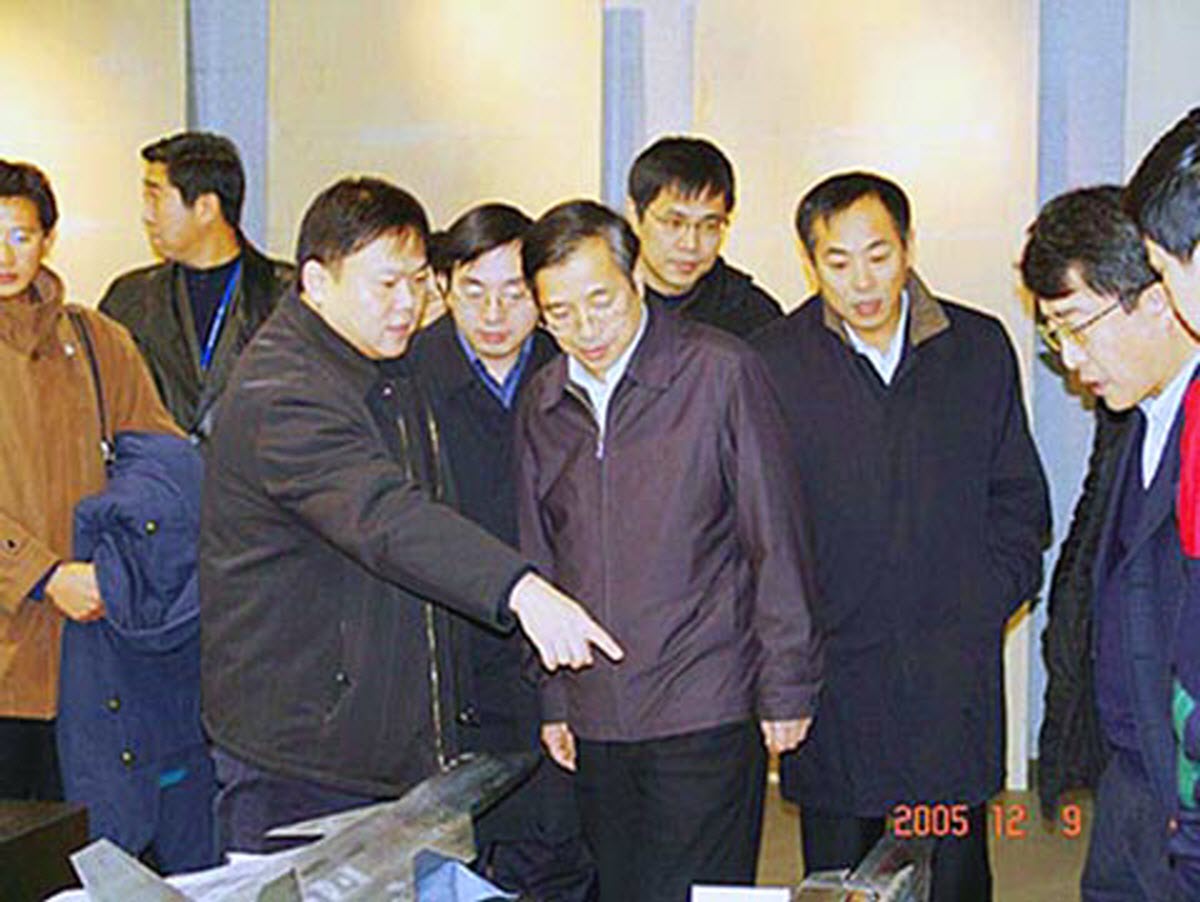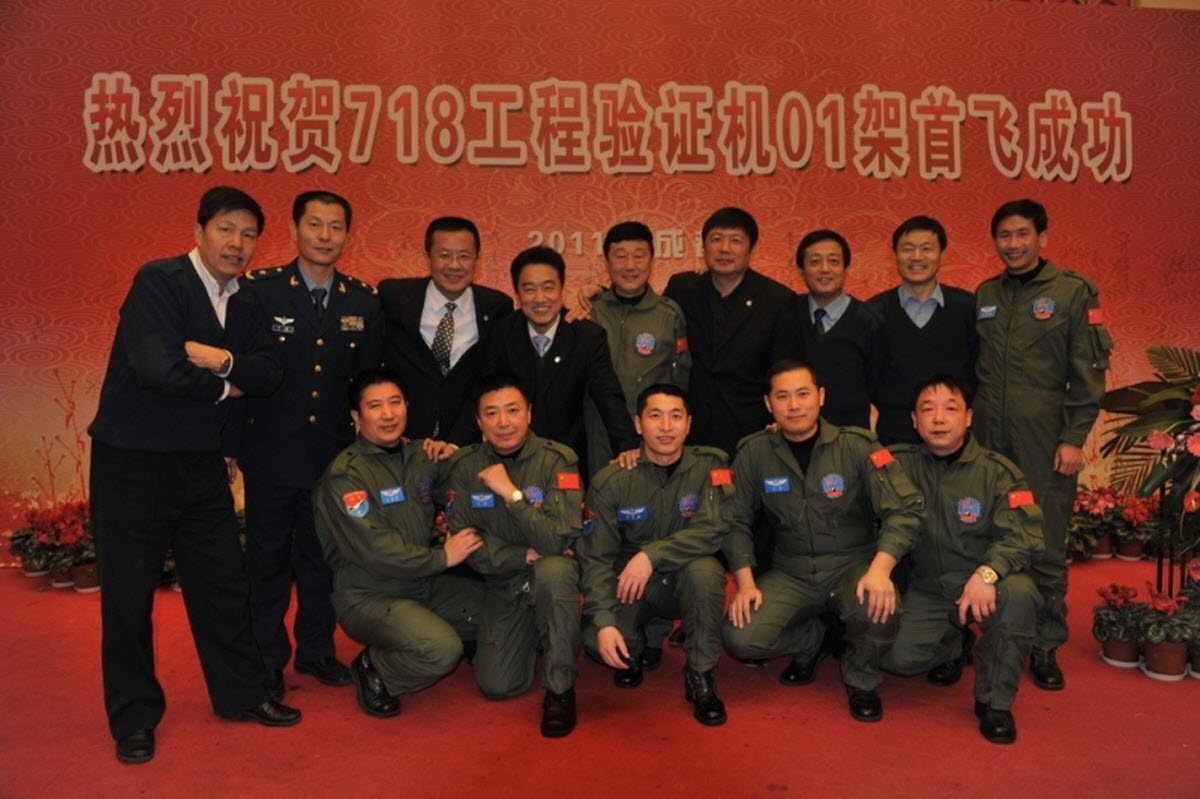Configuration and aerodynamics
Images taken from different angles give new interesting information about the aircraft, including the shape of the wing in the plan and the ability to analyze the features of the aerodynamic layout of the aircraft in order to understand what the machine is designed for, what its performance characteristics, structural and technological features will be.
The area diagram in cross section J-20 is very flat (without peaks) over a large length of the longitudinal axis of the aircraft, starting from the inlet of the air intakes and to the tail part, ending with the nozzles of the motors. Meanwhile, the same for the F-22A, F-35 and PAK FA - more "humped", with a characteristic peak in the center. Unlike the Russian and American colleagues, the linkers from Chengdu, led by chief designer J-20 Yang Wei, "maximized" the plane, reducing the cross-sectional dimension of the aircraft (not the fuselage, namely the aircraft, taking into account the thickness of the TsPGO and the wing) . The pay for a smoother diagram was an increase in the ratio of the length of the fuselage J-20 to its midship by approximately 15-20% relative to the F-22A.
The flat area diagram in the cross section of the aircraft is an important consideration for transonic modes. The aerodynamic configuration of the J-20 is optimized for transonic and small supersonic flight speeds with acceptable characteristics at subsonic modes and high supersonic ones. At high values, the air intakes made by the DSI type (diverterless supersonic inlet) with the boundary layer rotation are not working well. They first appeared on the F-35, providing a reduction in the visibility of radar facilities and at the same time retaining efficiency up to Mach number M = 1.4.
It turns out that the J-20 is an uncompromising machine for supercruise modes, more correctly, for transonic and "supersonic" cruising modes with Mach numbers in the M = 1.3-1.6 area are limited. Such speeds can be obtained on it without switching on the forced mode of operation of the engines. This allows us to realize a long flight in supersonic on the non-flexural modes of the power plant operation, to which the planes of past generations are incapable.
To fully reveal the features of a very interesting and progressive aerodynamic configuration, a suitable engine with high parameters is required. So far, the prototype aircraft used AL-31F (12.3-13.5 tons) and WS-10G (14-15 tons) - they suit the plane badly. Even with the purchase of more powerful versions of Russian motors of the AL-31F family (for example, with the M2 and M3 indices of the MMPP Salyut production) by China, it will not be possible to provide the J-20 with a suitable power plant, since these types of engines are optimized for aircraft with other (excellent) Performance characteristics.
"Super-cruise" modes in a wide range of heights will be in force by J-20, if Russia supplies the Chinese with engines of the AL-41F1M type ("product 117") with a thrust of about 14.5-15 tons. This is possible, since similar ones are used on Su-35S fighters, which are sold to China in the amount of 24 units. Another option will be opened with the restart of the production of the D-30F6 (which is used on the MiG-31 interceptor), especially improved options, such as a more powerful modification with a thrust of 16.5 tons, which was developed for the MiG-31M space interceptor. The third possibility is if the local engine builders bring to mind a prospective WS-15 engine with a maximum thrust of about 17-18 tons.
Deceptive similarities
Among the aviation enthusiasts, the opinion was formed that the J-20 was based on the experimental aircraft "1.42" OKB im. AI Mikoyan, who performed several flights in 2000. Indeed, with a cursory glance, two aircraft seem to be something similar. However, if you carefully study the J-20, it turns out that in its design a lot of that on the MiG has never been. At the same time, we will not say that cooperation with the OKB im. Mikoyan gave little to his Chinese colleagues.
Most likely, the situation is the opposite, because in aviation, especially combat, design practice, confirmed by flight tests, is a priceless thing, and any acquaintance with it through foreign colleagues only benefits. Here the main thing is not to repeat your mistakes and mistakes, but, taking them into account, move on along the path of progress, which the designers from Chengdu, of course, succeeded.
However, it seems more appropriate to say that the basis for the creation of the J-20 was the project of the lightweight front-line fighter of the fourth generation J-10, made earlier by the Chengdu Corporation (length - 15.5 meters, wing span - about ten meters, weight of the structure - about Ten tons). Of course, the gap for the generation (the first flight of the J-10 took place in 1998, entered service in 2006) makes itself felt.
General - both aircraft are different aerodynamic scheme "duck" with deltoid wing. They differ in static instability; The balancing in flight is provided by a digital electric remote control system (EDSU) (in the West such aircraft are said to be "guided" in flight). J-10 and J-20 are equipped with a "glass cabin" with an information-control field based on multifunction indicators with color liquid crystal matrices (MFIs with LCD).
disadvantages
Do not forget that the plane is always a compromise. And this means that he is not without flaws. Taking into account the large geometric dimensions, mass and availability of the CSSC, the Chinese aircraft has a large radar visibility. In comparison with the F-22A and PAK FA, it is characterized by low thrust, at least in the versions with the AL-31F and WS-10G engines.
Inadequate, in comparison with the F-22A and PAK FA, the thrust-even with promising WS-15 engines-lowers the value of the J-20 as a fighter for gaining dominance in the air. Probably, this fact explains the interest of the People's Republic of China in the purchase of Su-35S fighters. Somewhat better, the aircraft approaches the role of an interceptor in the country's air defense system, which replaced the obsolete J-8-II. But for him there are no long-range air-to-air missiles such as Russian R-33s. And if any, they will be difficult to "fit" inside the central compartment of weapons, not to mention the side.
At the same time, the J-20 can become a good attack aircraft capable of operating effectively without air cover in the face of countering the enemy's air defense system based on the F-16, F-18, MiG-29 fighter aircraft and the like, from a dangerous rapprochement with them It can evade due to better kinetics.
When equipped with suitable anti-ship missiles, the J-20 will create a serious threat to the possible enemy warships operating in the water areas adjacent to the Chinese coast. In the latter capacity, it will be able to replace the Chinese FH-7A and the Russian Su-30MK2, which are in service with the naval aviation regiments of the Navy of the People's Liberation Army.
When discussing the future of the J-20, the main questions for the expert community do not arise with designers, aerodynamics, and hardy designers-most agree that they coped brilliantly with their tasks. The main questions are for engine builders, instrument-makers and other suppliers of the second and third level: will they be able to create components for the J-20, which, at a general level, would approach the quality of the above-listed specialties? On their success depends on whether the J-20 really is a first-class combat aircraft comparable to the latest American and Russian developments. This question is still open.
Author: Vladimir Karnozov
Photo: Mukeshuang / Elizabeth Xue Bai / Li Gang / Jia Yuchen / Xinhua / Leonid Faerberg / Transport Photo Images / Globallookpress / Alexey Ivanov / TRK "Zvezda"



